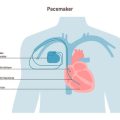1. Introduction to Swallowing Disorders
Swallowing is something most of us do without thinking—whether we’re sipping coffee, enjoying a meal, or simply swallowing our own saliva. However, for many Americans, this simple action can become a daily challenge. Swallowing disorders, also known as dysphagia, affect people of all ages but are especially common among older adults and individuals with certain medical conditions.
What Is Dysphagia?
Dysphagia is the medical term for difficulty swallowing. It can happen when there are problems with any part of the swallowing process—from the mouth and throat down to the esophagus. People with dysphagia might cough or choke when eating or drinking, feel like food is stuck in their throat, or even experience pain when swallowing.
Prevalence of Dysphagia in the United States
Dysphagia is more common than many people realize. According to research, up to 15 million Americans may experience swallowing problems at some point in their lives. The risk increases with age, especially for those living in nursing homes or recovering from strokes, head injuries, or certain diseases like Parkinson’s or cancer.
| Population Group | Estimated Prevalence |
|---|---|
| General Adult Population | ~9% |
| Nursing Home Residents | ~40-60% |
| Stroke Survivors | ~50% |
| People with Parkinson’s Disease | ~80% |
The Role of Speech-Language Pathologists (SLPs)
Speech-language pathologists (SLPs) play a key role in helping people with dysphagia. In the United States, SLPs are specially trained to assess swallowing function and develop personalized therapy plans that focus on safety and quality of life. Their responsibilities include:
- Evaluating how well a person swallows using clinical exams and imaging techniques such as videofluoroscopic swallow studies (VFSS) or fiberoptic endoscopic evaluation of swallowing (FEES)
- Identifying the underlying causes of dysphagia
- Teaching exercises and techniques to make swallowing safer and more effective
- Working alongside doctors, nurses, dietitians, and families as part of a care team
- Providing education about safe eating and drinking strategies at home or in healthcare settings
Why Evidence-Based Approaches Matter
Because every person’s situation is unique, SLPs rely on evidence-based approaches—methods that are proven by research—to guide their assessment and treatment. This ensures that patients receive the most effective therapies tailored to their specific needs.
2. Comprehensive Assessment Techniques
Understanding Swallowing Assessments in the United States
Before starting swallowing therapy, speech-language pathologists (SLPs) in the U.S. use a variety of evidence-based assessment methods to evaluate a patient’s swallowing function. These assessments help SLPs identify the specific difficulties a person may have and guide them in choosing the best therapeutic approach.
Types of Swallowing Assessments
Swallowing evaluations typically include two main categories: clinical bedside assessments and instrumental evaluations. Both play essential roles in American healthcare settings.
Clinical Bedside Swallow Evaluation
This is usually the first step in assessing swallowing problems. The SLP observes and interacts with the patient, looking for signs of difficulty while eating or drinking. The following table outlines common components:
| Assessment Component | Description |
|---|---|
| Case History Review | Collects information on medical background, current symptoms, and risk factors. |
| Oral Mechanism Exam | Checks strength, movement, and coordination of lips, tongue, jaw, and soft palate. |
| Observation During Eating/Drinking | Watches for coughing, throat clearing, voice changes, or difficulty managing food/liquids. |
| Trial Swallows with Different Textures | Tests ability to swallow various consistencies safely (e.g., thin liquids, purees). |
Instrumental Evaluations
If bedside assessment suggests further investigation is needed, SLPs may use advanced tools for a more detailed view. The two most common instrumental techniques are:
| Instrumental Tool | Description & Purpose |
|---|---|
| Videofluoroscopic Swallow Study (VFSS) | A moving X-ray (like a video) that shows how food and liquid move through the mouth and throat while swallowing; helps spot aspiration or residue. |
| Fiberoptic Endoscopic Evaluation of Swallowing (FEES) | A small camera is passed through the nose to watch the throat during swallowing; provides real-time images without radiation exposure. |
The Importance of Evidence-Based Assessment
The American Speech-Language-Hearing Association (ASHA) encourages SLPs to use these evidence-based methods to ensure safety and create effective treatment plans. Combining bedside and instrumental assessments gives a complete picture of swallowing function, allowing for more personalized therapy recommendations.
![]()
3. Evidence-Based Therapeutic Interventions
Direct and Indirect Swallowing Therapy: Best Practices
Speech-language pathologists (SLPs) in the United States use both direct and indirect approaches to support individuals with swallowing disorders, also known as dysphagia. The goal is to help clients eat and drink safely while improving their overall quality of life. Below, we’ll break down these evidence-based interventions in a simple and accessible way.
Direct Swallowing Therapy Techniques
Direct swallowing therapy involves practicing actual swallowing with various foods or liquids under the guidance of an SLP. These exercises are tailored to each person’s needs and may include:
- Mendelsohn Maneuver: Clients learn to hold their larynx up during a swallow to improve coordination and airway protection.
- Effortful Swallow: Individuals are coached to swallow hard, which helps strengthen throat muscles and clear food from the pharynx.
- Supraglottic Swallow: This technique teaches clients to take a breath, hold it tightly, swallow, then cough right after swallowing to protect the airway.
- Shaker Exercise: Lifting the head while lying down to strengthen neck muscles that assist with safe swallowing.
Indirect Swallowing Therapy Techniques
Indirect therapy does not involve food or liquids but focuses on strengthening the muscles needed for safe swallowing. Common practices include:
- Oral Motor Exercises: Targeted movements for the lips, tongue, and jaw to improve muscle strength and coordination.
- Sensory Stimulation: Using cold or sour tastes to stimulate nerves involved in swallowing reflexes.
- Breath Support Training: Activities that help coordinate breathing and swallowing, reducing risk of aspiration.
Compensatory Strategies Used by SLPs
Compensatory strategies don’t change the underlying swallowing problem but make eating and drinking safer in daily life. Here’s a handy table summarizing some common techniques:
| Strategy | Description | When It’s Used |
|---|---|---|
| Chin Tuck | Bending the chin toward the chest while swallowing | Helps protect the airway from food/liquid entering lungs |
| Head Turn (to weaker side) | Turning head to one side during swallow | Directs food away from weaker side of throat |
| Small Bites/Sips | Taking small amounts at a time | Makes it easier to control and clear food/liquid |
| Diet Modifications | Changing texture/consistency of foods and drinks | Easier to chew/swallow safely (e.g., pureed foods, thickened liquids) |
| Paced Feeding | Eating slowly with pauses between bites/sips | Lowers risk of choking or aspiration |
The Role of Family Education and Support
Family members play an important role in supporting loved ones with dysphagia. SLPs often teach caregivers how to use these strategies at home, promote safe mealtime routines, and encourage positive reinforcement during therapy exercises. Involving family helps create a supportive environment for continued progress outside clinical settings.
4. Multidisciplinary Collaboration and Patient-Centered Care
Why Teamwork Matters in Swallowing Therapy
When treating patients with swallowing difficulties, also known as dysphagia, speech-language pathologists (SLPs) play a key role—but they don’t work alone. Effective care often involves a team of professionals, each bringing their own expertise to support the patient’s recovery and well-being. Collaborating with other healthcare providers helps SLPs create safer and more personalized treatment plans.
Key Team Members in Dysphagia Management
| Team Member | Role in Swallowing Therapy |
|---|---|
| Speech-Language Pathologist (SLP) | Leads assessment and therapy for swallowing and communication issues. |
| Occupational Therapist (OT) | Helps with adaptive equipment and techniques for safe eating. |
| Dietitian/Nutritionist | Ensures patients receive the right nutrition and modifies diet textures. |
| Nurse | Monitors patient safety and assists with feeding as needed. |
| Physician (e.g., Primary Care, ENT, Neurologist) | Oversees medical management and diagnoses underlying conditions. |
| Family/Caregivers | Provide daily support and reinforce strategies at home. |
Strategies for Effective Teamwork
- Open Communication: Regular meetings or updates between team members help everyone stay on the same page about goals, progress, and any concerns.
- Shared Documentation: Using shared electronic health records lets all team members track interventions and outcomes easily.
- CLEAR Role Definition: Knowing who does what prevents confusion and ensures all aspects of care are covered.
- Mutual Respect: Valuing each member’s expertise encourages better collaboration and problem-solving.
- Involving Families: Including family members in planning and education leads to better carryover at home.
Putting the Patient at the Center of Care
A patient-centered approach means tailoring therapy to fit each person’s unique needs, values, and cultural background. This is especially important in the diverse communities across the United States. Here’s how SLPs can keep care truly patient-focused:
- Goal Setting with the Patient: Ask about what matters most—like enjoying meals with family or returning to favorite foods—and include these goals in the plan.
- Cultural Sensitivity: Learn about traditional foods, meal customs, and beliefs that may affect dietary recommendations or therapy participation. Adapt strategies to honor these preferences whenever possible.
- Linguistic Considerations: Use interpreters or translated materials if English is not the patient’s first language to ensure understanding and comfort during therapy sessions.
- Lifestyle Factors: Consider work schedules, social situations, or religious practices that could impact eating times or food choices when designing interventions.
Sample Table: Incorporating Patient Goals & Culture into Therapy Plans
| Patient Goal/Cultural Factor | Treatment Adaptation Example |
|---|---|
| Eats family-style meals every Sunday | Create strategies for safe group dining (e.g., pacing tips, selecting easier-to-swallow dishes) |
| Keeps Kosher or Halal diet | Select thickening agents or supplements that meet religious requirements |
| Loves spicy foods from their culture | Suggest texture-modified recipes using familiar spices/flavors |
| No refrigerator at home | Recommend shelf-stable nutrition options suitable for dysphagia diets |
The Takeaway: Everyone Wins With Collaboration & Respectful Care
The best outcomes in swallowing therapy happen when healthcare professionals work together—and when the patient’s voice is heard every step of the way. By building strong teams and honoring individual goals and cultural backgrounds, SLPs can make swallowing therapy safer, more effective, and more meaningful for each person they serve.
5. Clinical Case Studies and Best Practice Guidelines
Real-Life Case Scenarios in Swallowing Therapy
Applying evidence-based swallowing therapy techniques often starts with understanding real patient stories. Here are some sample case scenarios that speech-language pathologists (SLPs) in the United States might encounter:
| Case | Patient Profile | Assessment Findings | Intervention Strategies |
|---|---|---|---|
| Case 1: Post-Stroke Dysphagia | 67-year-old male, recent left-hemisphere stroke, mild right-side weakness, coughing during meals | Delayed swallow reflex, weak tongue control, moderate aspiration risk on thin liquids | – Thickened liquids – Effortful swallow technique – Chin tuck posture – Caregiver training |
| Case 2: Parkinson’s Disease | 72-year-old female, 10-year history of Parkinson’s, frequent drooling and slow chewing | Poor oral transit, decreased pharyngeal contraction, silent aspiration observed on VFSS* | – Mendelsohn maneuver – Double swallow – Small bolus size – Adaptive utensils |
| Case 3: Head and Neck Cancer Survivor | 59-year-old male, post-radiation therapy for oropharyngeal cancer, difficulty with solids | Reduced tongue base retraction, residue in valleculae, fatigue after eating | – Masako maneuver – Shaker exercise – Texture-modified diet – Scheduled rest breaks |
*VFSS: Videofluoroscopic Swallow Study
Practical Tips for Evidence-Based Application
- Personalize your approach: Every patient is unique; choose strategies based on their specific deficits and preferences.
- Use standardized assessments: Tools like the Modified Barium Swallow Impairment Profile (MBSImP) help guide treatment planning and track progress.
- Educate families and caregivers: Teach them safe feeding techniques and signs of aspiration to watch for at home.
- Document outcomes: Regularly monitor changes and adjust interventions as needed.
- Collaborate with interdisciplinary teams: Work closely with physicians, dietitians, and occupational therapists for holistic care.
American Clinical Guidelines and Resources
Key Guidelines to Reference:
- ASHA Practice Portal – Adult Dysphagia
- American Speech-Language-Hearing Association (ASHA) Policy Documents & Guidelines
- National Institute on Deafness and Other Communication Disorders (NIDCD): Dysphagia Information
- Dysphagia Outcome and Severity Scale (DOSS)
- International Dysphagia Diet Standardisation Initiative (IDDSI)
Best Practices in the U.S.
- Cultural sensitivity: Be mindful of food choices and family customs when recommending diet modifications.
- Payer requirements: Familiarize yourself with Medicare/Medicaid documentation standards for reimbursement.
- Lifelong learning: Stay updated through continuing education opportunities offered by ASHA or state SLP associations.
- Evolving technology: Incorporate telepractice or app-based exercises when appropriate to improve access and adherence.
This approach helps SLPs confidently apply the latest research to real-world clinical situations while meeting American practice standards.


